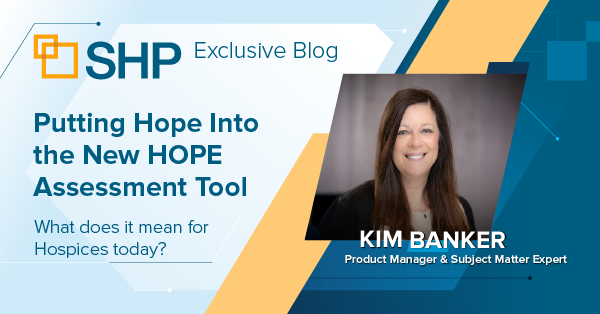
Hospices will be required to implement the new Hospice Outcomes and Patient Evaluation (HOPE) assessment tool on October 1, 2025. HOPE will take the place of the current Hospice Item Set (HIS) assessment tool utilized today. So, what does that mean for Hospices today? Over all there are new assessment timepoints that must be completed, along with new data elements, but questions remain regarding submissions of the assessments.
With the current HIS assessment hospices only are required to complete an admission and discharge assessment. With the new HOPE tool, new assessment timepoints will be required called the HOPE Update Visits or HUV. HUV 1 visits are required to be completed between days 6-15 and HUV 2 visits between days 16-30 of a patients stay. These must be completed by an RN. Another new component is the Symptom Follow up Visits (SFV) that need to be completed within two calendar days of an admission, HUV1, or HUV2 if any symptoms are assessed as moderate or severe. SFV visits may be completed by an RN or LPN. These assessments allow hospice teams to capture crucial information about changes in a patient’s health status, providing actionable insights for care planning. SHP plans to create new reporting to track assessment completeness to assist agencies.
To capture the of success in completing SFV’s, CMS finalized two HOPE-based quality measures: Timely Reassessment of Pain Impact and Timely reassessment of non-Pain Symptom Impact. These measures will not be reported until October 2027 which allows Hospice agencies the opportunity to have processes in place to meet the measures.
When reviewing the added documentation there is nothing that a hospice is not already taking into consideration regarding the patients’ overall status. New documentation includes more robust active diagnosis choices, comorbidities and co-existing conditions, new assessments for Death is Imminent, Symptom Impact Screening, Skin and more. SHP created our HIS to HOPE Crosswalk Guide to compare the differences. It’s a great tool to share with your team and field staff. As healthcare technology evolves, hospice professionals have the unique opportunity to lead the charge in delivering compassionate, data-driven care. By adopting HOPE, your hospice not only ensures compliance with CMS standards but also embraces a system designed to elevate care quality.
Many questions currently exist in regards as to how Hospice agencies should manage submissions of the new HOPE assessments. We at SHP are continuously investigating the requirements. As there is ambiguity in the Federal Register around requiring a vendor to “submit” HOPE assessments, SHP reached out to CMS for clarification and their response was "Basically, the HART tool is going to be retired, and it will require hospices to select a private vendor if they don't already have one. Hospice providers will need to use vendor or third-party to complete and code HOPE assessments, but providers can choose to submit the records themselves, or they can arrange with a third party to submit on their behalf." This clarifies that Hospices will be required to have a vendor create the HOPE assessments for submission, but Hospices may submit themselves as they do with HIS today. The main difference is that HOPE will be submitted via iQIES whereas HIS is submitted via QIES today. If you do not have an iQIES account, please visit https://iqies.cms.gov/iqies. We expect most EMR’s will fulfill the initial step of coding the assessments.
The transition from HIS to HOPE represents a pivotal shift in hospice care delivery and quality improvement. For hospice professionals, HOPE’s comprehensive assessments, enhanced quality metrics, and data-driven insights provide an opportunity to elevate the standard of care. As October 1, 2025 approaches, it’s important to prepare your organization for this transition by familiarizing yourself with HOPE’s features, aligning your processes, and leveraging the rich data it provides to inform meaningful improvements.
Furthermore, HOPE is designed to be more comprehensive by capturing patient and family care needs in real-time and accommodating patients with varying clinical needs. This patient-focused approach is expected to improve the overall quality of hospice care. From improving patient outcomes to fostering transparency and trust, the benefits of HOPE are clear. This is more than just a reporting tool—it’s a step forward in the way we shape end-of-life care, ensuring every patient and family can experience dignity and support during one of life’s most profound journeys.
At Strategic Healthcare Programs (SHP), we’re here to support you every step of the way. Our analytics and quality improvement solutions integrate seamlessly with HOPE, helping your organization transform raw data into actionable insights.
Get Ahead with SHP – Request Your Demo Today
Take the uncertainty out of transitioning from HIS to HOPE with SHP’s innovative solutions and expert insights. Our tools provide hospices with the actionable data needed to optimize care, ensure compliance, and thrive in this new era. Request a demo today and see how SHP can support your agency in delivering better outcomes, improving operational efficiency, and staying ahead in the changing hospice landscape. Contact us now to take the first step toward success!

